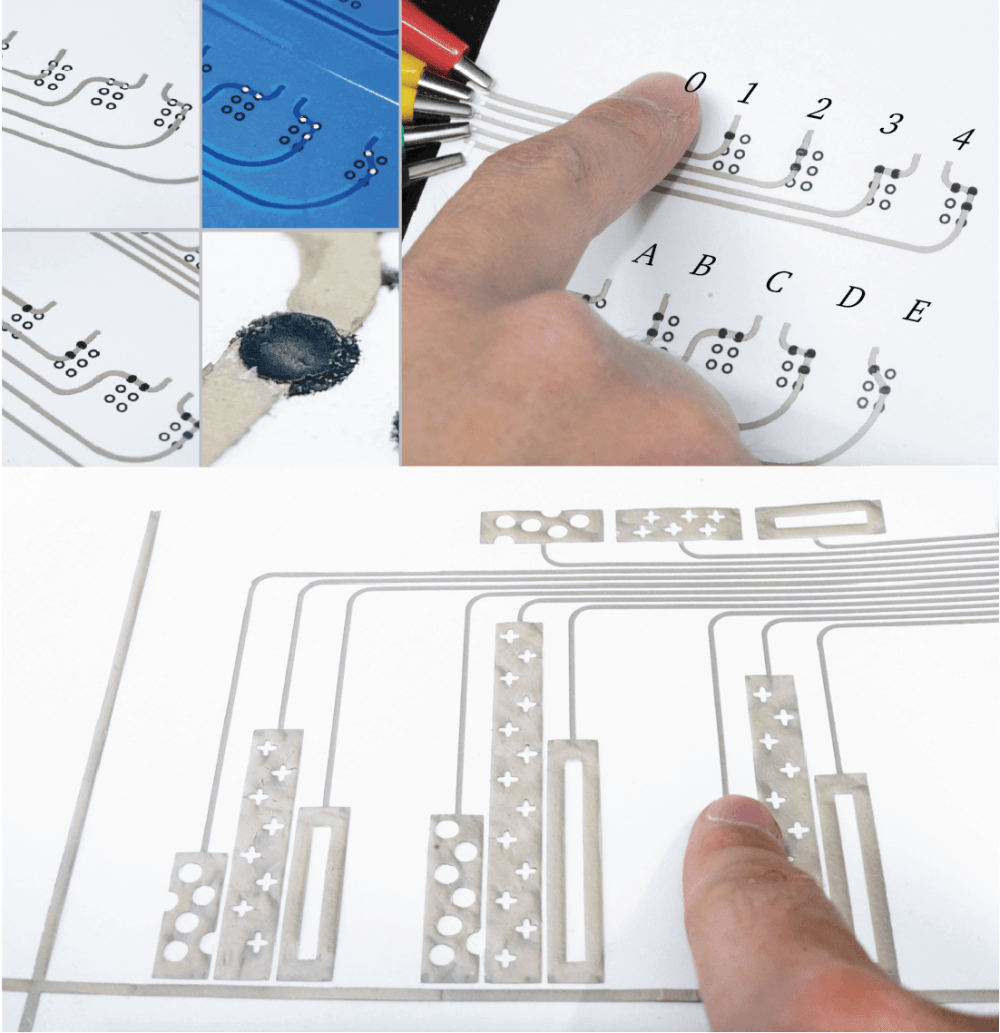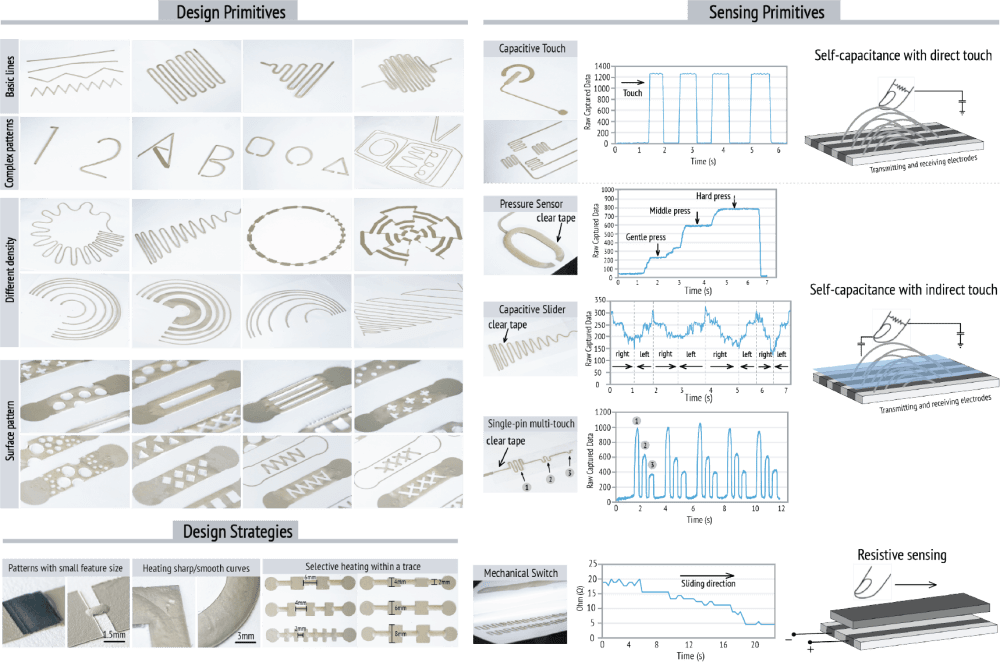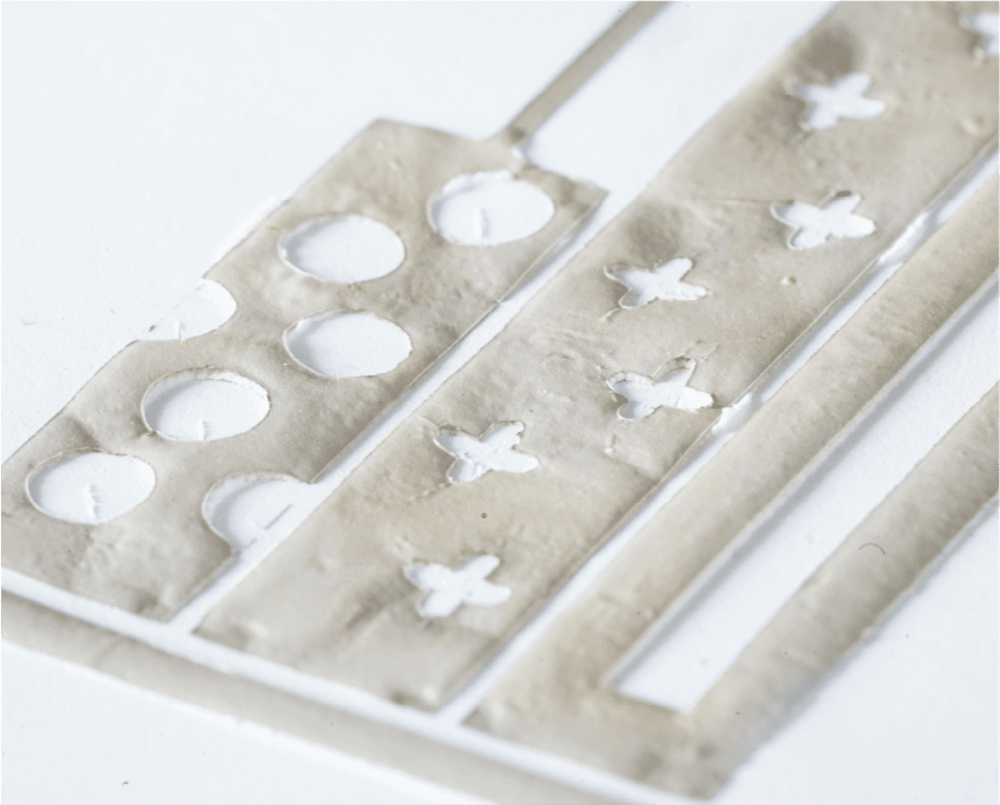

Our living environments are always patterned or textured. 2.5D structures, from rough surface textures to more explicitly-designed patterns, are ubiquitous and are interwoven with 2D planar surfaces. These 2.5D textures assist human perception, enabling us to feel, understand, and discover additional environmental information.
Recognizing the importance of 2.5D structures, researchers have tried to reproduce or even invent new surface textures to help with human perception. Creating textures faces challenges of expensive and slow fabrication machines e.g., using high-resolution 3D printers or requiring special 2.5D pattern printers (e.g., Casio Mofrel 2.5D printer). Also, most of the existing work focused on creating different forms of the 2.5D textures, while less attention is spent on enabling sensing in these fabricated textures to support interaction with the surfaces. Our work, therefore, aims to provide a highly-customizable approach to rapidly fabricate 2.5D surface structures with integrated sensing capabilities.
SwellSense aims to bridge this gap and our approach makes use of an existing, special micro-capsule paper that expands locally on its surface when heated. By screen printing a stretchable conductive silver ink (the primary ink) and carbon ink (the supplementary ink) on the micro-capsule paper, we achieve both the heater to trigger the localized material swelling as well as the sensor to capture input signals as a user slides their finger over the textured surface. The interactive capabilities of SwellSense can provide assistance for visually impaired individuals, enabling audio augmentation through tactile interaction. It also opens up new design space to create various physical interfaces with informative and expressive tactile features.
Video
-
Awards
-
 2023 Electronics Honorable Mention
2023 Electronics Honorable Mention -
 2023 Top 100 Entries
2023 Top 100 Entries
Like this entry?
-
About the Entrant
- Name:Tingyu Cheng
- Type of entry:teamTeam members:
- Hyunjoo Oh
- Gregory Abowd
- Clement Zheng
- Zhihan Zhang
- Bingrui Zong
- Yuhui Zhao
- YeJun Kim
- Software used for this entry:Rhino, grasshopper, Human UI
- Patent status:none








